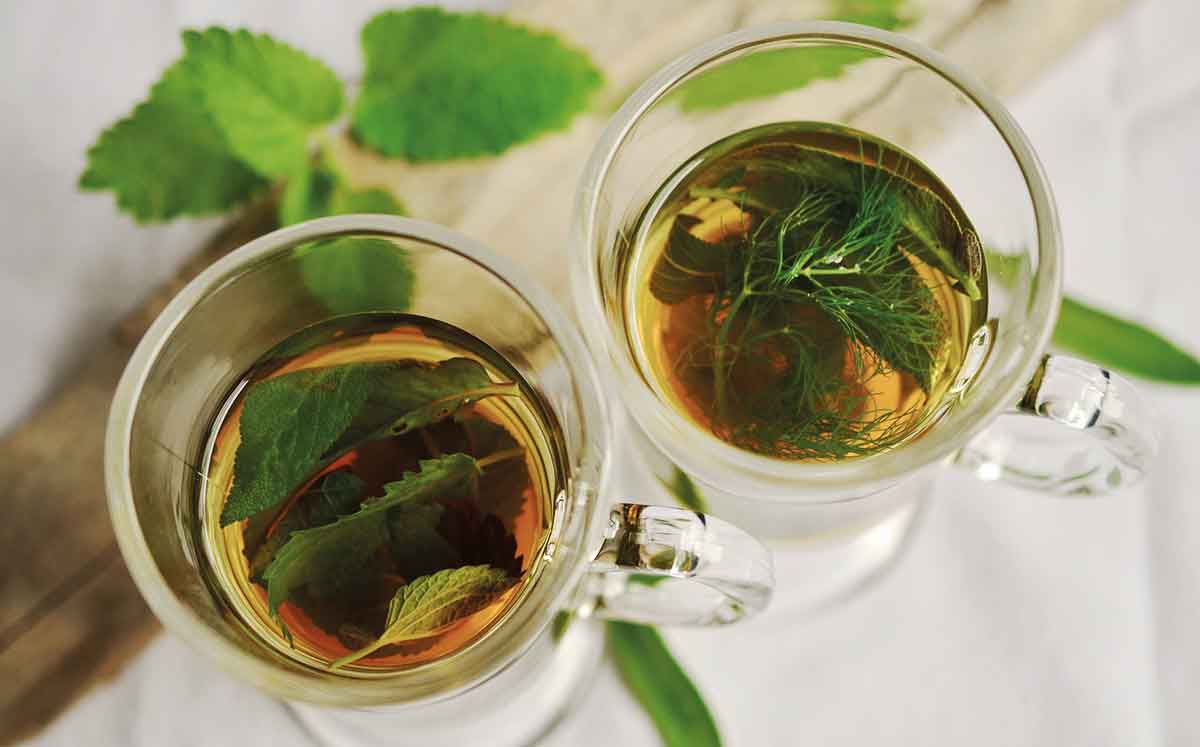Thankfully the majority of herbal tea plants are a cinch to grow. Fiann Ó Nualláin shows you how.
In this article we cover:
- Which parts of the plant to use to make tea
- Benefits of herbal teas for different ailments
- How to grow anise for tea
- How to grow basil for tea
- How to grow chamomile for tea
- How to grow fennel for tea
- How to grow jasmine for tea
- How to grow sage for tea
- How to grow peppermint for tea
- How to grow yarrow for tea
The original tea plant is Camellia sinensis and even though it’s a cousin of garden camellias, it is not as easy to maintain. But most herbal tea plants are thankfully much easier to grow.
The term ‘herbal tea’ applies to more than herbaceous parts (foliage), it can apply to seeds, roots and flowering parts too. Maybe you are new to gardening or to the idea of a productive garden – one that is not just pretty but packed with edible and medicinal bounty. I will list the most popular teas here but you can expand to meet your own specific needs.
Whatever the tea you favour, and be it a flavour to drink or apply to the skin, your tea garden doesn’t have to be all dedicated raised beds, it can be a range of attractive containers and even a mixed floral border.
Floral teas have a long history and to name but a few; chamomile, chrysanthemum, orange flowers, hibiscus and jasmine are both herbal teas in their own right and flavour enhancers to many tea blends. Fresh or dried, the flower buds, full blooms or picked petals may make up the infusion or enhancement.
The seeds of many plants contain a microburst of nutrients, phytochemicals and a flavourful punch too, such as anise or fennel.
Anise tea
Pimpinella anisum is an annual herb with a long tradition improving digestion and preventing bloating/flatulence. It is sometimes used for its estrogenic action; the seeds in particular contain transanethole, a plant hormone very similar to human estrogen traditionally used to help with delayed or irregular menstruation and as a support to lactation in nursing mothers. How to grow. Anise is a member of the carrot family but grown for its foliage and seed rather than roots.
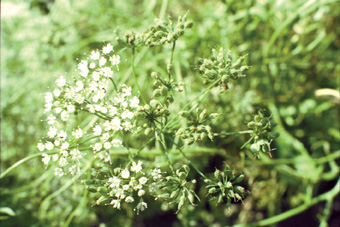
It favours full sun in a light and well-drained soil. It may need staking or other support in less sheltered locations. Anise it best treated as a half hardy annual. Easy enough from seed, germination takes approximately 10 to 12 days in a propagator at 20degC, but a little longer on the windowsill. As the tap root does not like disturbance, if sowing indoors I would advise to individually sow into root trainers or loo rolls to plant directly into the ground.
You can sow direct from April to June, into the container or part of garden that you want them to grow. The rule is generally to sow 10-12mm deep, 30cm spacing between each, in rows 40-45cm apart. The aromatic foliage can be harvested as you go. The seeds ripen from late August through September.
Basil tea
Ocimum basilicum also known as sweet basil is an annual plant from the mint family with a long history as a culinary herb. The genus name Ocimum derives from the Greek word ozo meaning ‘to smell’ and certainly basil emits a pleasant aroma.
There are several cultivars of basil including a lemon variety and a cinnamonscented variety; foliage shape variations include Italian/curly basil and lettuce-leaf basil.
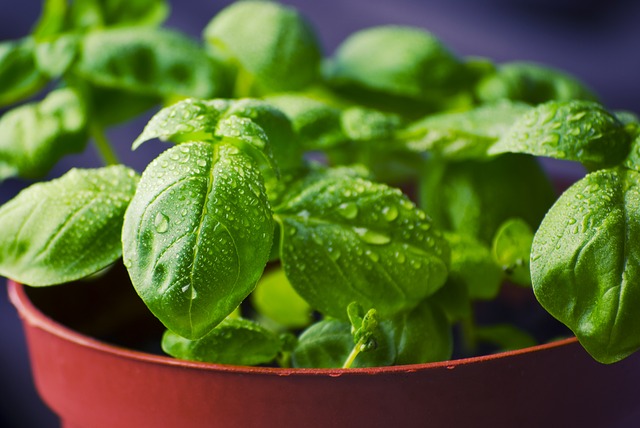
How to grow. Basil favours a well-drained sandy soil. It is essential to have a high light level or sunny position to really bring out its aromatic qualities. It can be grown indoors as a window sill plant or houseplant or as a seasonal summer container plant.
It is also often grown as a companion to tomatoes in polytunnels and in shelter outside allotment beds, where it can boost the flavour of that fruit. It can be tricky when sown direct, so most commonly started indoors – in any month of the year and acclimatised to plant outside later – when frosts are not a factor.
Propagator in the range of 15 to 25degC. Its germination can take anything from 14 to 21 days, if just on a windowsill the success is at lottery win odds. Wherever you choose to grow it, do pinch out the tops of plants to encourage a more bushy growth and more tea leaves. Spacing will depend on variety.
Chamomile tea
There are several species of chamomile but the two most common in ancient and modern herbalism are Roman Chamomile (Anthemis nobilis) and German Chamomile (Matricaria recutita).
They both contain, to varying degrees, a similar phytochemistry and mineral profile including calcium, magnesium, potassium and folate among many others – and so are used interchangeably. Some tea blends even combine both herbs.
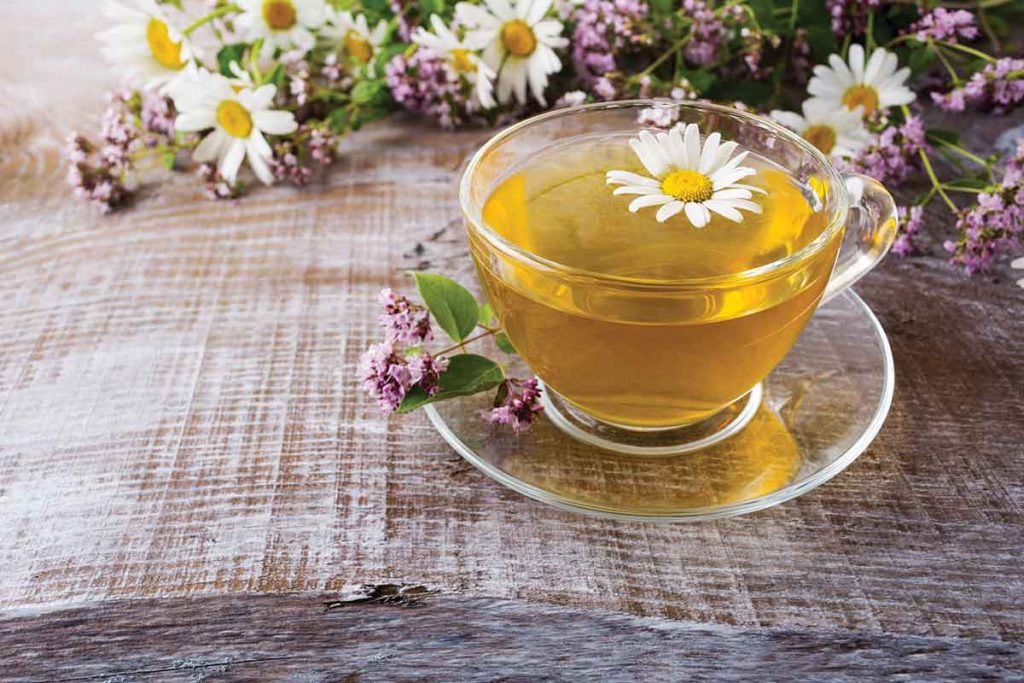
How to grow. The Anthemis variety does best in full sun, in light, well-drained soil. It can be direct sown in situ at this time of year but germination can be erratic so it is good to start indoors and transplant into place later. It requires a germination temp of 15degC and usually takes seven to 14 days to show.
Best to surface sow and let it catch maximum light. Plug plants can be spaced at 30cm and will soon knit together to form a good clump. The Matricaria variety likes similar growing conditions. It can germinate at 8degC and so is often the chamomile direct sown in spring.
Do not dust over as it needs light exposure to germinate. Both varieties are suitable for chamomile lawn type plantings as green lawn, on green roofs and also in containers.
Fennel tea
Foeniculum vulgare is a popular diuretic; to address fluid retention in the body and also to help eliminate toxins. Used for detox and in the alleviation of arthritis and gout via the expulsion of excess uric acid. Because fennel also exhibits antiseptic properties it is also used against urinary tract infections and is beneficial to treat cystitis.
Cooled fennel tea can also be used as eyewash for conjunctivitis and as a soothing rinse for sore eyes.
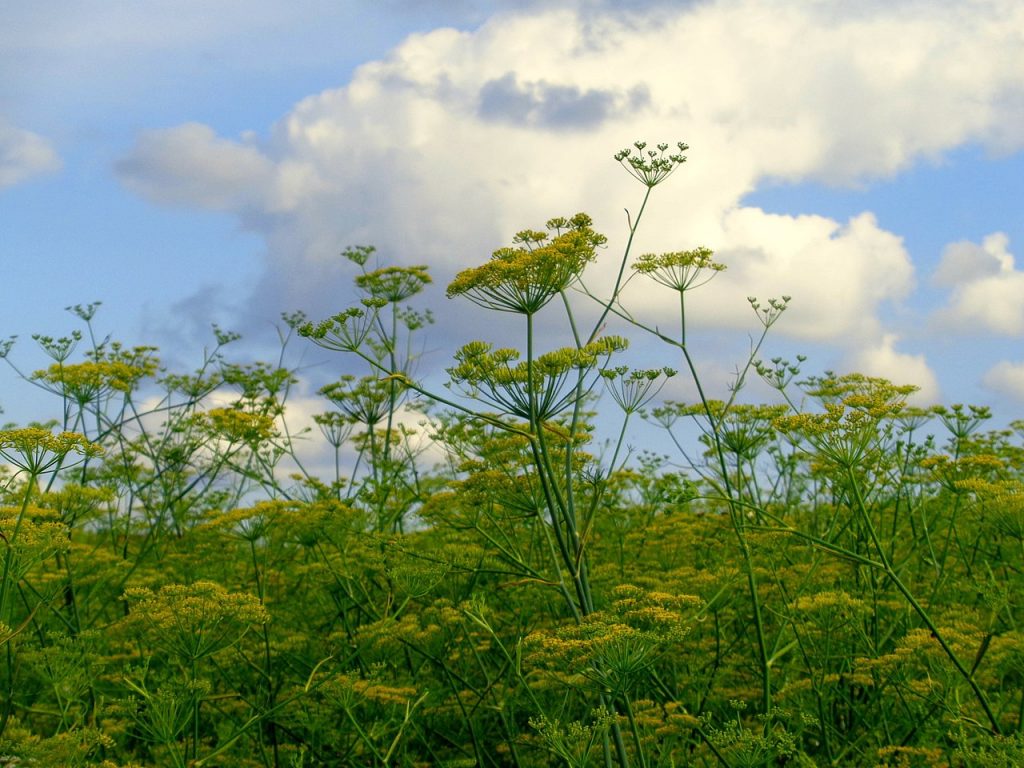
How to grow. Fennel can be started indoors but as its roots don’t like being transplanted, it is best practice to sow direct into ornamental pots or the ground where you would have it grow. It will germinate from spring and over summer, so you have plenty of scope.
It will germinate more readily at temperatures of 15 to 18degC and will usually take 10 to 14 days. The rule is to sow individually 10mm deep at 30cm spacing and if in rows then leave approximate distances of 60 to 70cm apart as it is a spreading plant.
It will possibly self-seed and may spontaneously crop up in a different location next year but to start your first plant off right, place it in its preference of a well-drained site.
It is somewhat drought tolerant but that said it does not like to be left unwatered too long as its aromatics tend to dry up in prolonged drought. It is pretty much frost hardy but will require full sun to fully perform. Seeds will ripen from August through September.
Jasmine tea
The botanical Jasminum spp. and common names derive from a French corruption of the Persian name of the perfumed plant yasmin. There are more than 200 flowering vines in the genus but the most popular are Jasminum grandiflorum which is mostly used in herbal remedies, and J. officinale which is often the preference for aromatherapy but they are interchangeable.
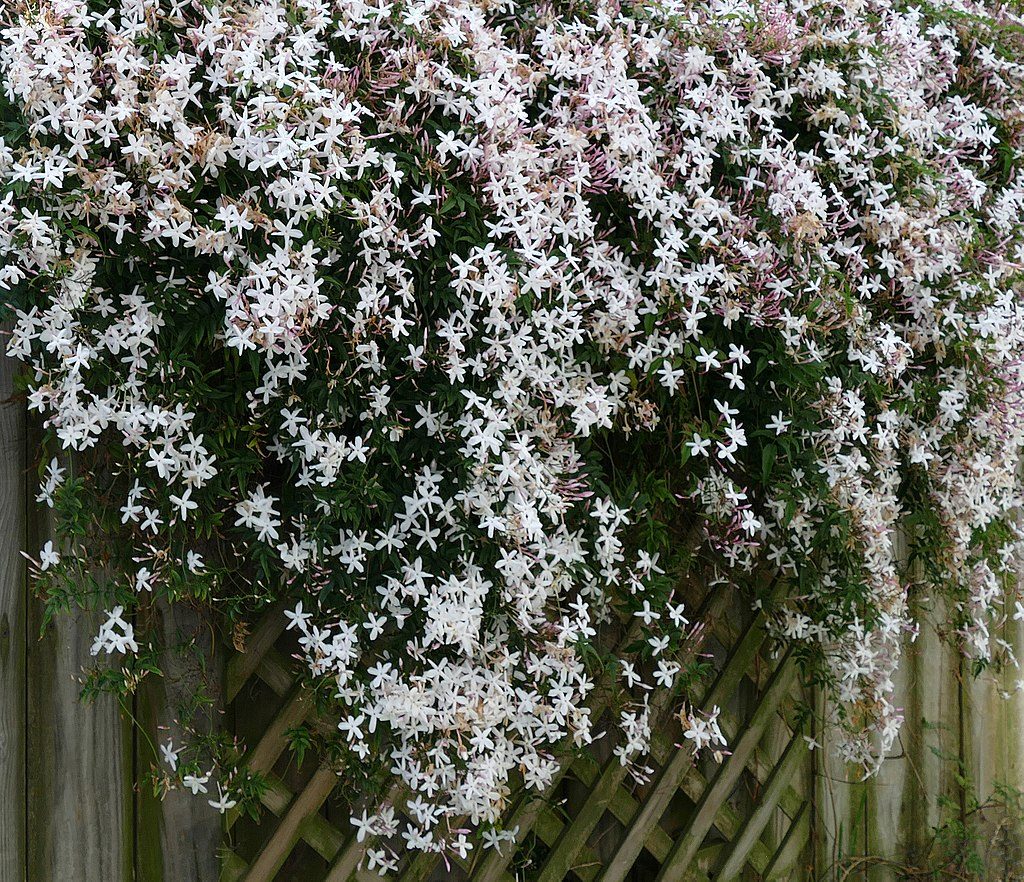
How to grow. Jasmine is a perennial climber. It requires room to spread. The two types of jasmine species that are popular in tea are frost hardy, some other varieties are not.
Jasmine is not one I would be starting from seed as it takes so long to mature into a crop. I would be thinking of a pot plant to start with. You can get mature specimens that will surround an arbour or pergola instantly. I grow mine against a wall and tie it into a trellis structure, it shelters part of my garden and I can harvest it regularly.
It is also suitable in the short term for a large pot or container. Jasmine does best in full sun and well-drained soil. It prefers a south or southwest facing aspect.
Peppermint tea
Mentha x piperita is actually a hybrid of spearmint (M. spicata) and water mint (M. aquatica) – naturally occurring in the wild and also cultivated as a medicinal herb, food flavouring and for purposes of essential oil and menthol extraction.
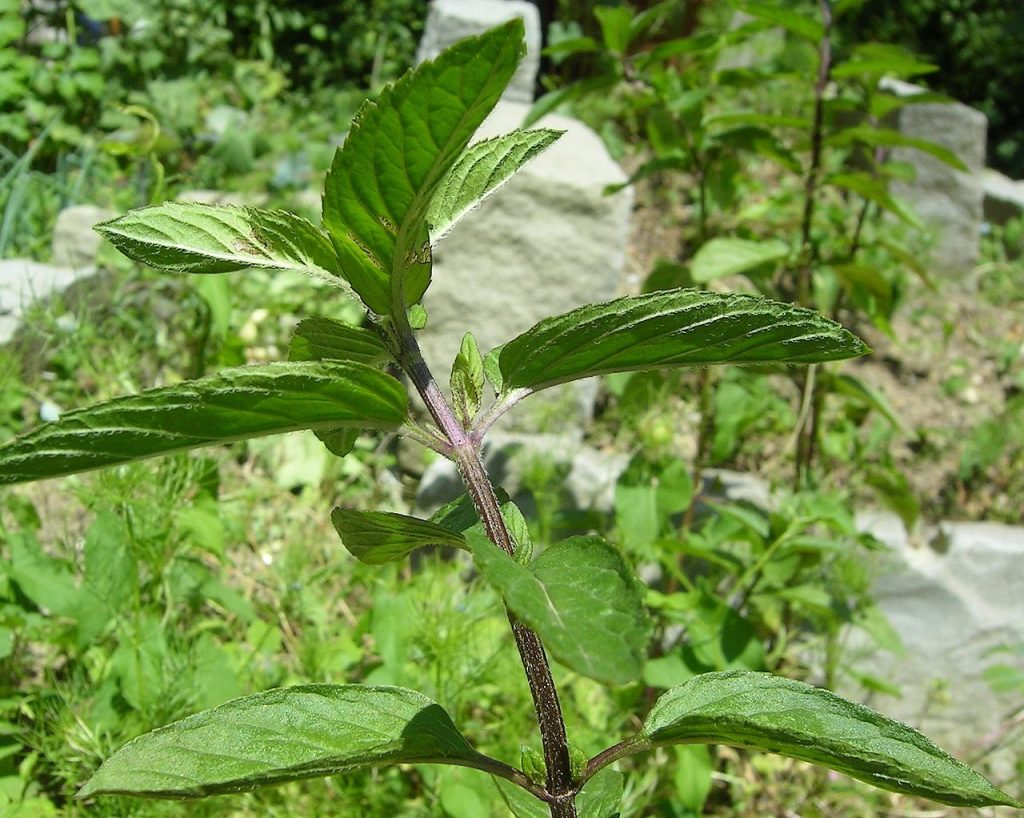
There are many variations but the two most recognised and used are black peppermint (Mentha x piperita vulgari) with darker stems and a reddish flush and the paler and milder white peppermint (Mentha x piperita officinalis).
How to grow. Peppermint is quite invasive and is best grown in containers so as to restrict its root run from taking over your whole garden. It is not too fussy about soil type and while it does best in sun it will take to shade too.
It is one of those plants that benefits from division every three to four years to rejuvenate it. And over the course of its time it also benefits from regular picking or clipping to maintain a bushy habit of favourable foliage.
A hardy perennial that dies back in winter; you can extend its season by bringing it inside. A temperature of 18 to 20degC and exposure to light is essential to germination, which can be erratic at the best of times. But all you’ll need is one seed to come out to have plants for life.
Sage tea
In medicinal terms, the clue is often in the name. In this case Salvia Officinalis; the Latin salvere means to save denoting its manifold medicinal applications and Officinalis further reminding us of its official curative status. Sage is one of the oldest medicinal plants.
Used in fumigation and smudging rituals from the earliest of times, on several continents, sage is probably best known for alleviating menstruation and menopausal complaints. Its anti-inflammatory and antispasmodic constituents such as rosmarinic acid help relieve stomach cramp and mild back pain.

How to grow. Sage needs free-draining soil in full sun to fully develop its chemistry and to best survive without pest and diseases. It is a slow starter from seed and can take its time too as a cutting but once up and established it will do well.
Easily maintained if placed right from the start; it prefers slightly alkaline soil. Does best in a sunny location with light, free-draining or grit amended soil – the trick is to mimic the Mediterranean where it originates from.
Best to sow seeds in situ 1cm deep, about 30cm apart. A cloche will be invaluable to achieve germination. Alternately, with a propagator, those seeds will germinate in the range of 15 to 20degC, in around 21 days. Pinch out tops or clip to prevent plant from going leggy or woody too soon.
Yarrow tea
Achillea millefolium is most often used to stimulate more efficient digestion but with its carminative, anti-inflammatory and antispasmodic effects it makes it suitable for the gamut of stomach upsets. There is also a tradition of using it to ease menstrual cramps and attenuate symptoms of PMS and menopause.
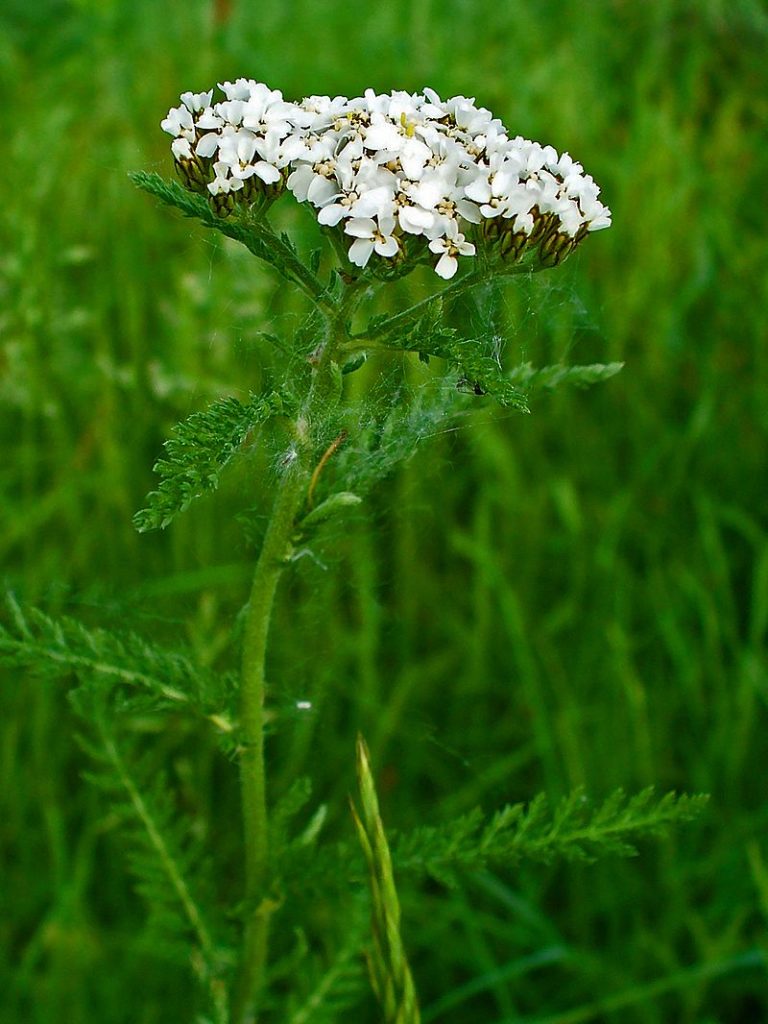
The apigenin found in yarrow possesses potent anti-inflammatory and antispasmodic actions but is also believed to have mild antidepressant and anti-stress properties. How to grow. Yarrow can be cultivated as a herb or an ornamental plant.
It favours dry sites and malnourished soils. It often features in wildflower mixes for meadows and rooftop gardens. I grow traditional white flowering yarrow and some of its colourful cousins in a mixed herbaceous border and they all thrive when given a wide pocket of grit amended soil to establish in.
Yarrow has a specific germination criteria; it likes its seeds to break their dormancy in full light. So that’s a surface sowing on top of moist compost or a sowing direct onto a fine tilth-raked soil where you want them to grow. They require a germination temperature of 18 to 25degC and generally take a little over a week to sprout. It can spread, but not to invasive standards.
It may self-seed into a nearby lawn or gravel path but are easily prised up. Until next time, good gardening and good health.
A Quick Cuppa Herbal by Fiann Ó Nualláin is published by Mercier Press.
ISBN 9781781176702, 224 pages, €15.29







